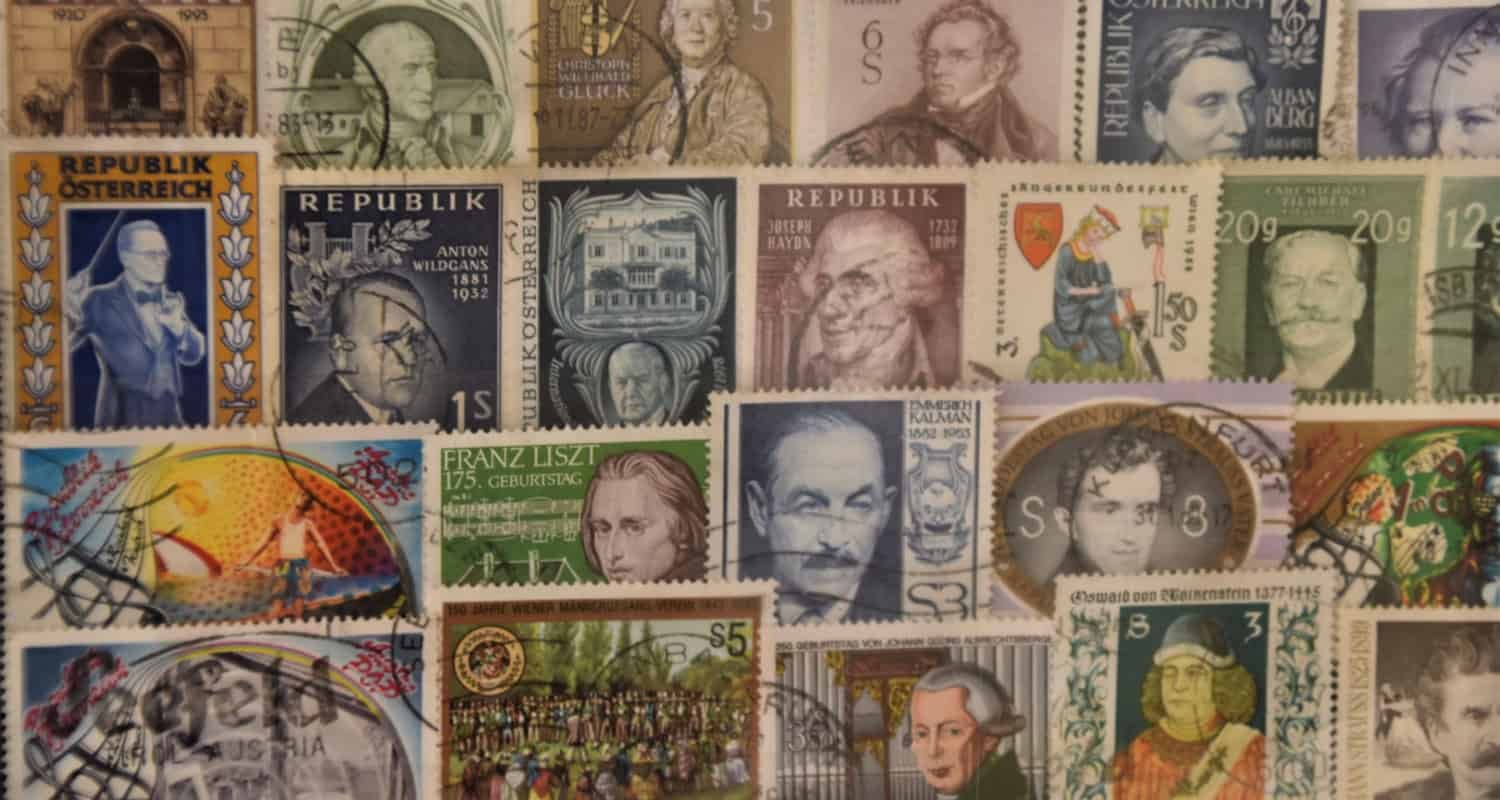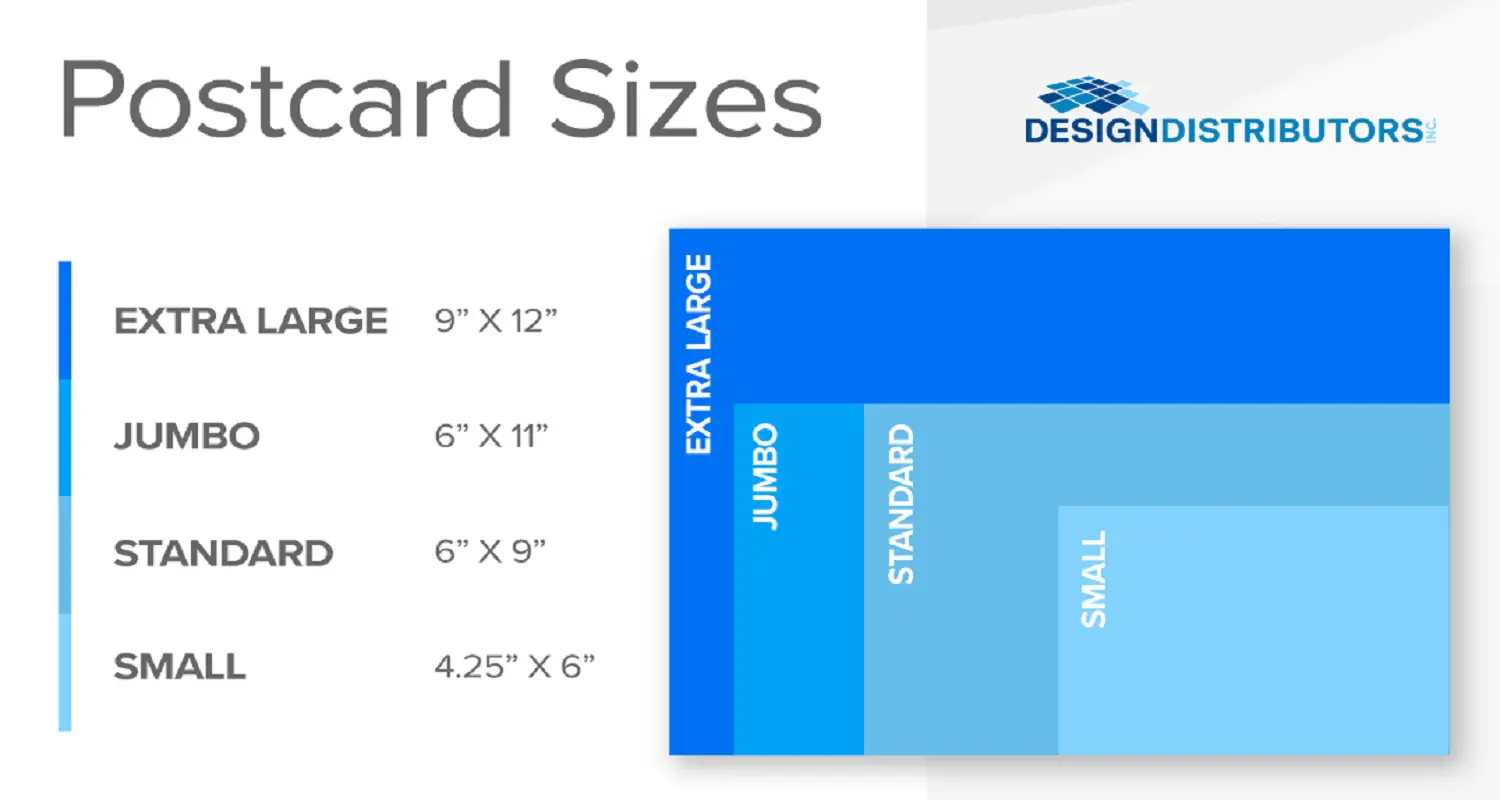Postcard Sizes are available in a wide range. Postcards are today more popular than letters because they are easy to carry, easy to post; don’t need an envelope and they come in various shapes and sizes and look better than traditional enveloped letters. All one needs is a stamp and something written to post it to your nearest and dearest.
Postcards have been varying in size over decades. Some Postcards have been made in unique shapes, and we made them out of exclusive material. But after the formation of International Standards for Postcard Sizes, some sizes have been made mandatory. And hence, we’re here today to discuss Postcard Sizes. We’ve listed the old and the new rules for Postcard Sizes below.
Table of Contents
International Standard Postcard Size/Postcard Dimensions
UPU (Universal Postal Union) is the organization that decides the International Standard Postcard Size. It has defined that postcards should have maximum dimensions of 235 mm × 120 mm (9.25 in × 4.72 in) and minimum dimensions of 140 mm × 90 mm (5.51 in × 3.54 in).
[table id=5 /]The material of the postcard should also be thick enough not to undergo wear; tear during handling and processing but shouldn’t be very thick to increase the weight.
Generally, Postcards are made in A6 Size following the ISO 216 Rules for A Series Paper, which has the dimensions of 148 mm × 105 mm (5.8 in × 4.1 in). The UPU also states that a Postcard should have a minimum aspect ratio of √2:1 but can always have a higher aspect ratio making sure; it stays well within the minimum and maximum dimensions mentioned.
US Postal Service Standard Postcard Size
UPU has ambiguity regarding the thickness of postcards; hence it may times causes many problems in handling and other transportation. US Postal Service tries to solve this problem by the introduction of a standard minimum and maximum thickness; along with minimum and maximum dimensions. The maximum sizes and thickness are 152.4 mm × 107.9 mm (6.0 in × 4.25 in) and 0.406 mm (0.016 in), respectively.
[table id=6 /]The minimum dimensions and thickness are 127.0 mm × 88.9 mm (5.0 in × 3.5 in) and 0.178 mm (0.007 in). The width of the Postcard Size has mentioned by basic weight, and the paper used is 39lb to 105lb bond stock, 55lb to 145lb cover stock or 145gsm to 390gsm. Hence, we have come to an end with USPS postcard size.
Older Postcard Sizes
The world’s oldest postcard on record, dated in 1840 and sent from London to England. Since then, Postcard Sizes have undergone various amendments and changes in shapes and forms. We find colorful and monochromatic picture postcards in rectangular, squarish, and circular formats.
In some places, unique materials like wood, copper, etc., have also been used for making postcards in the past; they are still in use in smaller amounts with higher paid prices. Traditionally, some countries have postcards priced lower than letters, so postcards have been in more use in such nations.
Old British Postcard Sizes
England introduced these plain and printed postcards with stamps in 1870; picture postcards were introduced in 1894 had dimensions of 4.75 in × 3.5 in. A Postcard Size equivalent to the minimum aspects of the UPU (5.5 in × 3.5 in) has introduced in 1899 as the maximum dimensions.
A new minimum dimension has been set as 3.25 in × 2.25 in. In 1906, further reforms in Postcard Sizes led to the increase in minimum size from the previous one to 4 in × 2.75 in. In 1925, these reforms led to the rise of the maximum dimensions to 5.875 in × 4.125 to increase the writing space.
Around this time, special rates were imposed on postcards to earn money as there was a spike in their use. This was again abolished in 1968 when special postcard rates were withdrawn; so were the minimum and maximum dimensions. Around this time, the UPU was formed, and the UK happily embraced the UPU International Standard Postcard Size.
Importance of Postcards in 21st Century
Since humans developed thinking, they felt the need to communicate. To communicate and let others know what we are thinking and what we want to share. Communication has always been an exceptional level of interaction amongst all kinds of Earth species living in groups or communities. Various species of living things communicate in different forms. Some leave trails, while some have an antenna, some can talk, and some do it through touch.
For humans, it’s oral and written for the most part, even though there are forms of sign language and communication through touch. Verbal communication seems very easy and vital over long and short distances because of advancements in technology like mobile phones and the internet, television and fiber optics, and, most critical, camera technology.
But before these technologies prevailed, i.e. in the old times, written communication was the most vital form. Humans have sent letters to relatives and acquaintances for a variety of purposes for centuries. Way back in time, messages were delivered by horse-mounted riders and then later on by train pigeons before the discovery, or rather the development of the postal service.
And even today, the Postal service has prevailed even in this era where written communication through paper is becoming scarcer as we are all going digital. The main reason behind this is the feel of it – reading and writing a letter – and legal works carried out in hand and physical records. Many people still find peace in writing letters and postcards, especially during the holiday seasons, as it gives a sense of traditional completeness and happiness. So this was all about postcard sizes.
FAQs
Does the size of a postcard matter?
It makes no difference if your postcard is too large or too little; all Marketing Mail is invoiced at letter rates. Postcards larger than 6.125′′ x 11.5′′ or thicker than.25′′ are the sole exceptions. Large envelope postage will be paid for any mailer this size or larger.
Is there a standard size for postcards?
Postcards are typically 4
Are special stamps required for postcards?
Postcards do not require special stamps; they utilize the same regular stamps as the rest of the United States mail. A single stamp more than covers the cost of sending a basic postcard. However, a second stamp should be there for bigger postcards.
Is a return address required on a postcard?
A return address is not essential on your postcard, but if the post office cannot deliver it, they will not be able to return it if you do not include one.
Can you design your postcard?
Making your postcard may be as easy or as complicated as you like. You may begin with plain, store-bought cardstock and print a gorgeous image on the front before proceeding. Alternatively, you may be more daring and use glitter, thread, decoupage, and paint.
Do postcards require personalization?
In most circumstances, postcards will feature lines for an address; however, a postcard might be blank in certain cases. Making it a practice to jot down the address before writing your message is an excellent method to avoid taking over the postcard with your message, leaving no place for an address.
Is it more official or casual to send a postcard?
A postcard is an informal and intimate form of writing. Because a postcard has limited space, you normally discuss only a few items and utilize shorter sentence forms. In postcards, descriptive adjectives frequently demonstrate that you admire something or someone.
How do you put postcards on display?
The most traditional method of displaying postcards is to hang them straight on the wall without a frame. Display your postcards on your wall in a grid using push pins. If you have enough postcards, cover a whole wall with them, or pick a small section of one wall to display your postcards.
Which country invent postcards?
Austria-Hungary issued the first cards in 1869 after a proposal by Dr. Emanuel Herrmann, albeit he was not the first to propose the idea. They were incredibly popular and were made in two languages: German and Hungarian.







